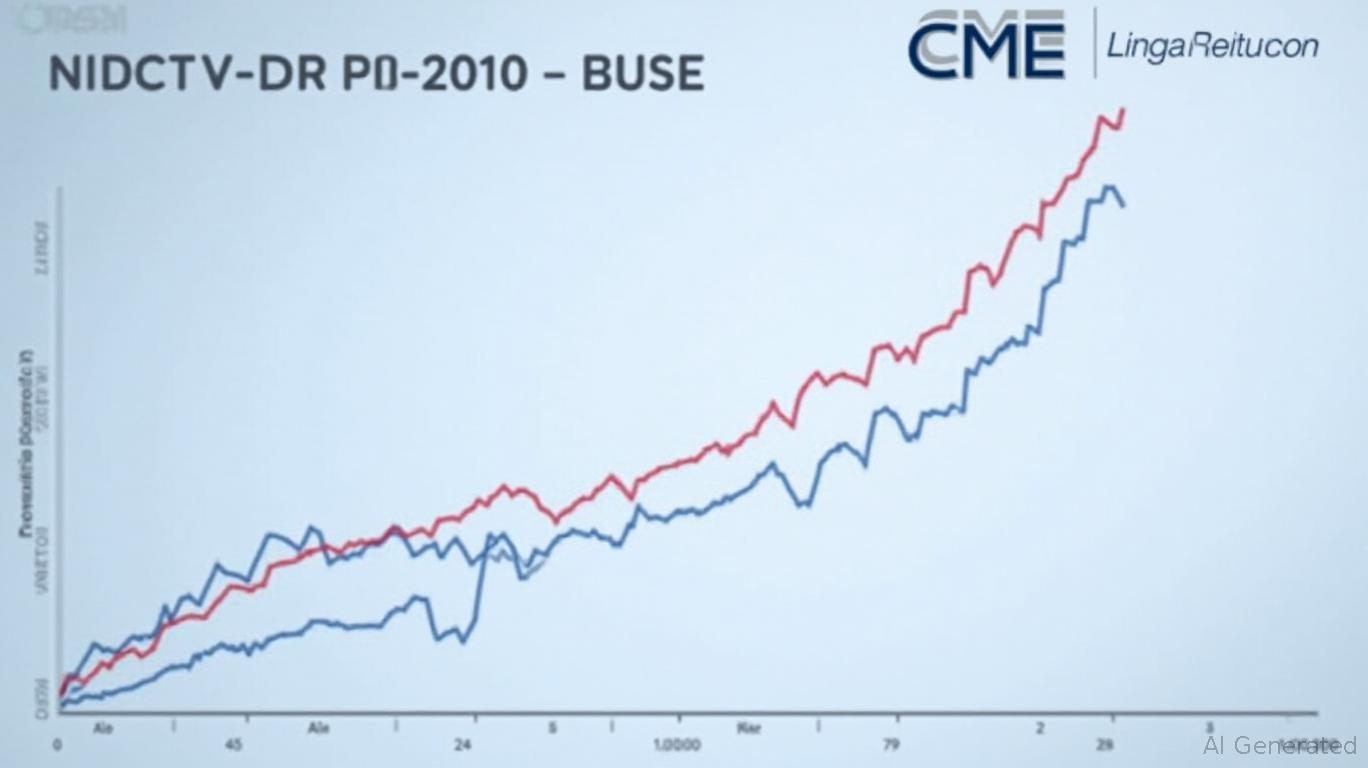CME Group: A Pillar of Resilience in the Volatile Derivatives Landscape
In an era of heightened market volatility and geopolitical uncertainty,
(CME) has solidified its position as the world's premier derivatives marketplace. The company's recent presentation at the Piper Sandler Global Exchange and Trading Conference underscored its strategic strengths—diversified asset class offerings, dominant clearing infrastructure, and innovative product development—that position it to capitalize on evolving market dynamics. Below, we dissect CME's competitive advantages and growth catalysts, building a case for its long-term investment potential.The Power of Diversification: Beyond Traditional Markets
CME's portfolio spans interest rates, equity indexes, foreign exchange, and commodities, creating a resilient revenue stream insulated from sector-specific downturns. In interest rate derivatives, the company leverages its leadership in Treasury futures and options, where average daily volumes (ADV) rose to 1.568 million by early 2025, a 14% increase from 2024. This growth reflects traders' reliance on CME's tools to navigate rate volatility, particularly with products like the CME Group Volatility Indices (CVOL), which provide real-time insights into market skew—critical for hedging in turbulent environments.
For equity derivatives, CME's Micro E-mini futures have emerged as a game-changer. The Micro E-mini Nasdaq-100 futures, for instance, saw ADV surge by 35% year-on-year to 1.8 million contracts in Q1 2025, capturing retail and institutional demand for smaller, cost-efficient exposure to equity indexes. Meanwhile, the AIR Total Return Futures, which combine equity price movements with overnight interest rates, achieved a record Q1 ADV of 26,000 contracts (+87% vs. 2024), highlighting their appeal to investors seeking total return exposure.

Clearing Infrastructure: The Bedrock of Trust
CME Clearing, one of the world's largest central counterparties, remains a cornerstone of its competitive moat. By centralizing risk management, CME minimizes counterparty credit risk and ensures liquidity even in crises. This infrastructure underpins its ability to offer cross-margining programs, which reduce capital requirements for multi-asset traders by up to 75% in certain interest rate spreads. Such efficiencies are critical as firms grapple with rising capital costs and regulatory scrutiny.
The company's push to modernize its technology further cements its edge. Its partnership with Google Cloud to migrate clearing applications to the cloud aims to reduce latency and enhance scalability. By 2025, this transition could enable real-time analytics and faster product launches, reinforcing CME's dominance in post-trade services.
Growth Catalysts: Equity Derivatives and Innovation
CME's equity derivatives segment is a standout growth driver. In Q1 2025, equity index ADV hit a record 8 million contracts (+17% YoY), driven by Micro E-minis and overnight trading activity. The upcoming launch of Spot-Quoted Futures—small-sized contracts tied to real-time prices—could amplify this momentum. These products, targeting indices like the S&P 500 and Nasdaq-100, eliminate the need for monthly futures rolls, reducing costs for long-term investors.
In interest rates, CME's Eris SOFR Swap Spreads have tightened by 10 basis points since early 2025, creating trading opportunities with minimal capital. The company's focus on weekly options (now 44% of Treasury option volumes) further caters to short-term hedgers, underscoring its product agility.
Management's Vision: Capitalizing on Uncertainty
CME's leadership has consistently aligned its strategy with market needs. CEO Terry Duffy emphasized “the need for precise risk management tools” in volatile environments, a theme reflected in product launches like Trade Marker at Close (TMAC) and FXSpot+, which integrate futures and cash liquidity. The company's partnership with Robinhood to introduce futures trading to retail investors signals a deliberate push into the fastest-growing segment, leveraging smaller contract sizes and educational tools.
Financially, CME's Q1 2025 revenue hit $1.6 billion (+10% YoY), with equity and interest rate divisions driving growth. Margins remain robust, supported by cost discipline and scale advantages.
Investment Thesis: A Buy on Resilience and Innovation
CME's combination of diversified revenue streams, unrivaled clearing infrastructure, and innovative product launches positions it as a beneficiary of enduring market volatility. Key catalysts include:
1. Equity Derivatives Dominance: Micro E-minis and Spot-Quoted Futures could capture retail and institutional flows.
2. Interest Rate Tools: CVOL indices and cross-margining programs will retain institutional demand.
3. Technology Edge: Cloud migration and data analytics could lower costs and attract new clients.
Risk Factors: Overregulation in derivatives markets, cyber threats, or a prolonged low-volatility environment could pressure margins.
Conclusion: A Core Holding for the Volatility Era
CME Group is more than a derivatives exchange—it's a critical infrastructure provider in a world where risk management is non-negotiable. With its unmatched scale, product innovation, and fortress-like balance sheet, it stands to gain share in both equity and interest rate markets. For investors seeking exposure to financials with defensive characteristics and secular tailwinds, CME merits a long-term position.
Consider initiating a position in CME with a target of $250–$300 per share, supported by its 10-year average P/E ratio of 20x and a dividend yield of ~1.5%.
Data as of June 2025. Past performance does not guarantee future results.

Comments
No comments yet